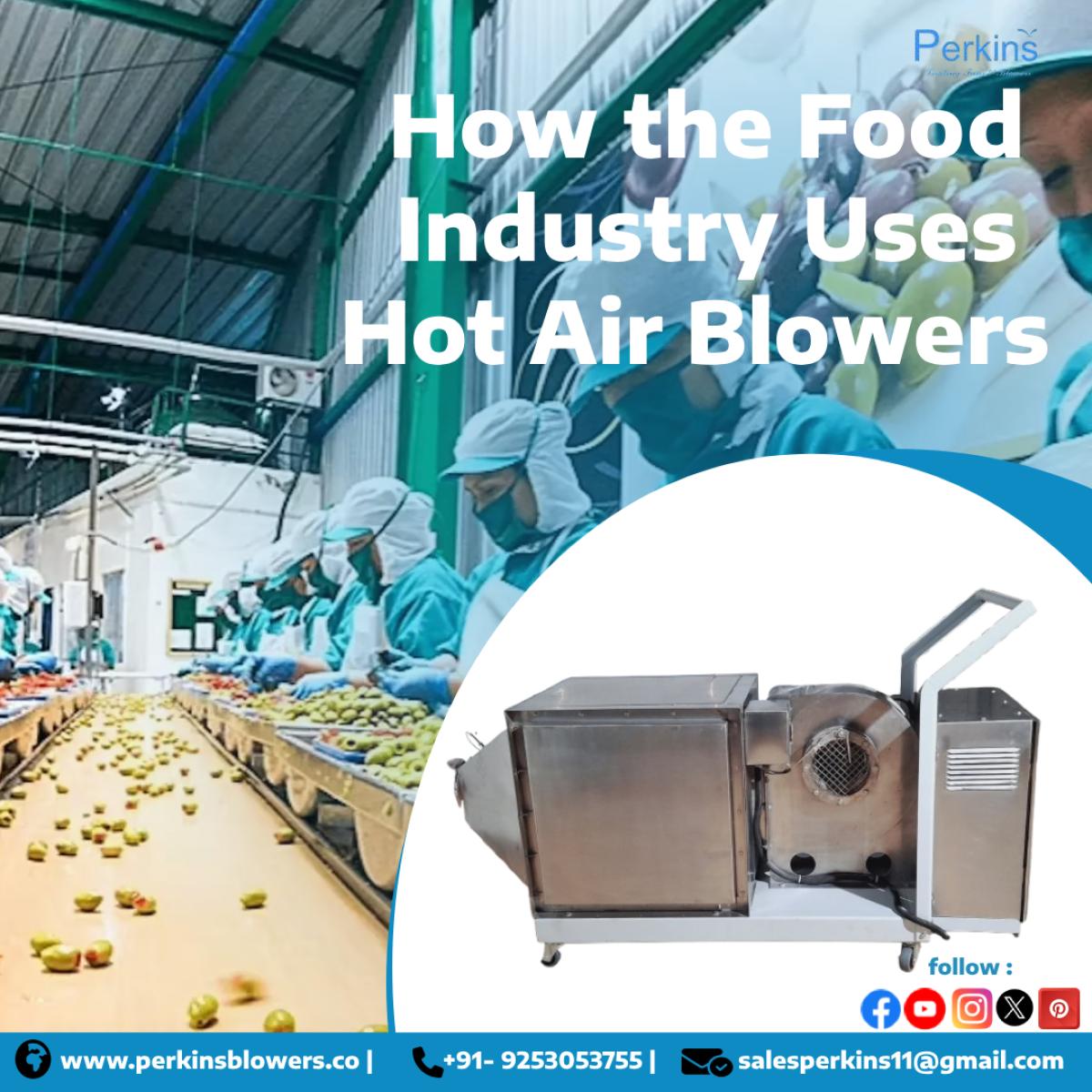
The food industry relies heavily on advanced technologies to maintain product quality, ensure safety, and optimize efficiency. Among the many tools that have become indispensable in modern food processing, hot air blowers play a vital role. From drying and sterilization to packaging and labeling, these devices provide precise heat control that helps food manufacturers meet strict industry standards.
In this blog, we’ll explore the applications, benefits, and importance of hot air blowers in the food industry.
What Are Hot Air Blowers?
Hot air blowers are industrial devices designed to generate and direct heated air at controlled temperatures. Unlike traditional heating equipment, they offer a high level of accuracy and efficiency in delivering hot air to specific areas. This makes them particularly useful in industries like food processing, where consistency, hygiene, and safety are paramount.
They work by drawing in ambient air, heating it through an element, and then forcing it out using a powerful fan or blower. The temperature and airflow can be adjusted depending on the specific application.
Applications of Hot Air Blowers in the Food Industry
1. Drying After Washing
In food processing plants, fruits, vegetables, and packaged goods often undergo thorough washing to remove dirt, pesticides, or contaminants. After washing, excess moisture must be removed to prevent microbial growth and maintain freshness. Hot air blowers are widely used to dry products quickly and efficiently without causing damage.
For example, in a fruit processing line, hot air blowers dry apples, grapes, or berries before they are packed, helping extend shelf life and ensuring better packaging.
2. Sterilization of Equipment and Packaging
Maintaining hygiene is one of the most critical aspects of the food industry. Hot air blowers are often used for sterilizing surfaces, trays, containers, and packaging materials. The high-temperature air effectively eliminates bacteria, fungi, and other harmful microorganisms, reducing the risk of contamination.
Unlike chemical sterilization methods, hot air sterilization leaves no residues, making it a safer and more eco-friendly solution.
3. Sealing and Shrink Wrapping
Packaging plays a vital role in food safety and presentation. Many food items are packed in shrink-wrapped films or heat-sealed containers. Hot air blowers are essential in these processes because they provide uniform heat that ensures strong seals and smooth finishes.
Whether it’s sealing a bag of chips or shrink-wrapping a pack of bottled water, blowers ensure packaging is airtight, tamper-proof, and visually appealing.
4. Baking and Roasting
Some food processing facilities use hot air blowers to assist in controlled baking and roasting processes. By providing evenly distributed hot air, they ensure uniform cooking results. For example, in nut roasting lines, hot air helps achieve consistent roasting without burning, enhancing both flavor and aroma.
5. Label Drying and Adhesion
Labels on bottles, cans, and jars often require a perfectly dry surface for strong adhesion. After filling and capping, containers may retain condensation or moisture. Hot air blowers are used to dry container surfaces before labeling, ensuring the labels stick firmly and remain intact throughout transportation and storage.
6. Defrosting Frozen Foods
In frozen food processing, hot air blowers can be used to gently defrost products without compromising texture or quality. This method is often quicker and more consistent compared to natural thawing, making production lines more efficient.
Benefits of Hot Air Blowers in the Food Industry
1. Energy Efficiency
Modern hot air blowers are designed to consume less energy while delivering high-performance heating. This makes them cost-effective for large-scale operations.
2. Consistency and Control
The ability to regulate both airflow and temperature allows food manufacturers to maintain consistency in their processes, whether it’s drying fruits or sealing packaging.
3. Improved Hygiene and Safety
Since blowers eliminate moisture and sterilize equipment without chemicals, they help maintain the highest hygiene standards, reducing risks of foodborne illnesses.
4. Speed and Productivity
Hot air blowers accelerate many processes such as drying, defrosting, and sealing. This leads to faster production cycles and improved overall productivity.
5. Versatility
From small bakeries to large-scale food plants, hot air blowers can be adapted to a wide range of applications, making them a versatile tool in the industry.
The Future of Hot Air Blowers in Food Processing
With increasing emphasis on sustainability, energy efficiency, and automation, hot air blowers will continue to evolve. Future designs may include smart controls, integration with IoT-based monitoring systems, and advanced energy recovery features. This will not only improve performance but also reduce the environmental footprint of food manufacturing operations.
Conclusion
The food industry operates under stringent quality and safety requirements, making reliable tools essential. Hot air blowers have proven to be one of the most effective solutions for a wide range of applications, including drying, sterilization, packaging, and more. Their efficiency, precision, and versatility make them a cornerstone of modern food processing facilities.
As the industry continues to advance, hot air blowers will play an even greater role in helping manufacturers maintain safety, efficiency, and product quality while meeting global standards.
